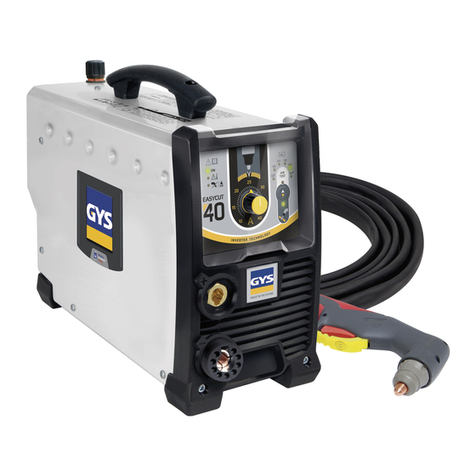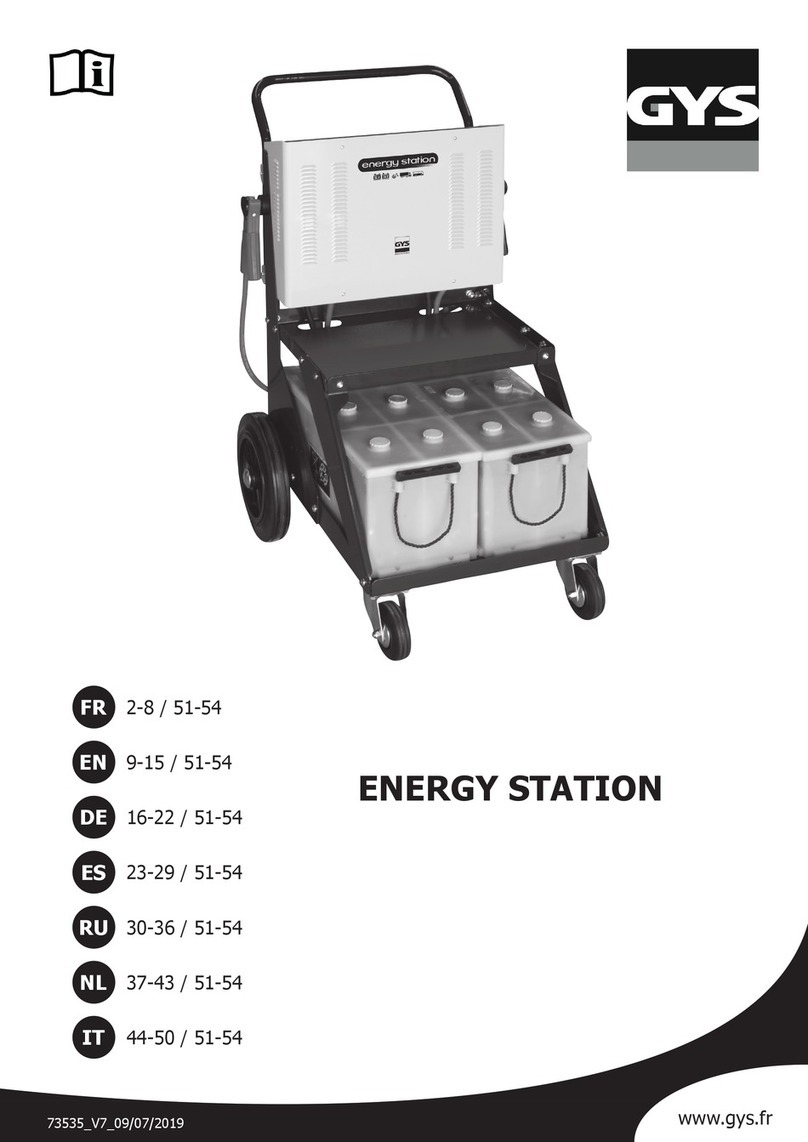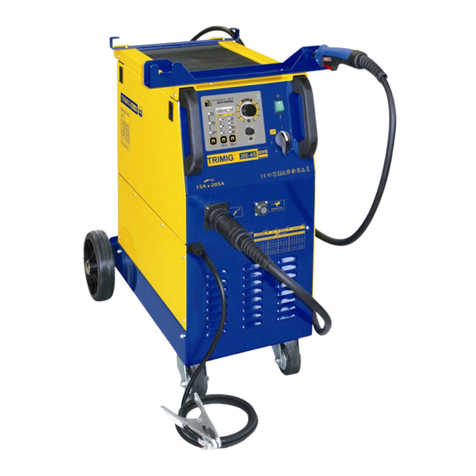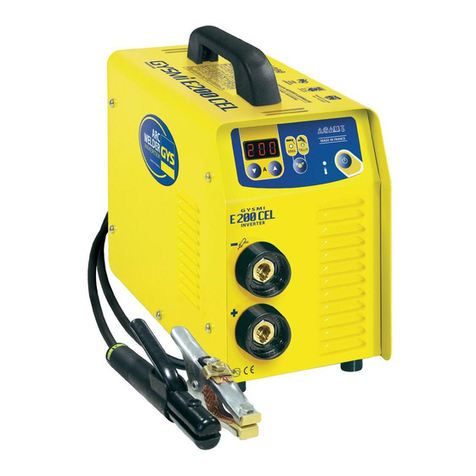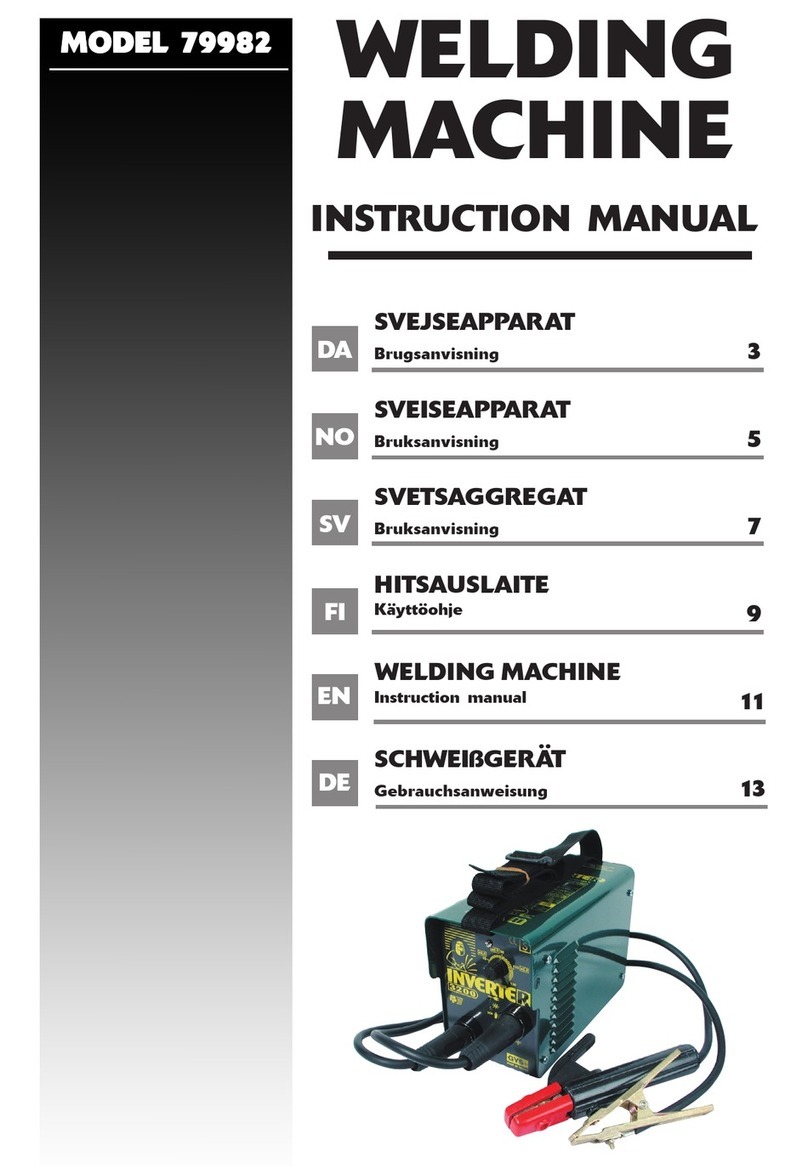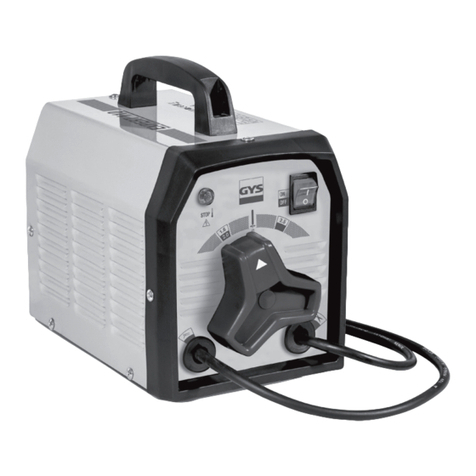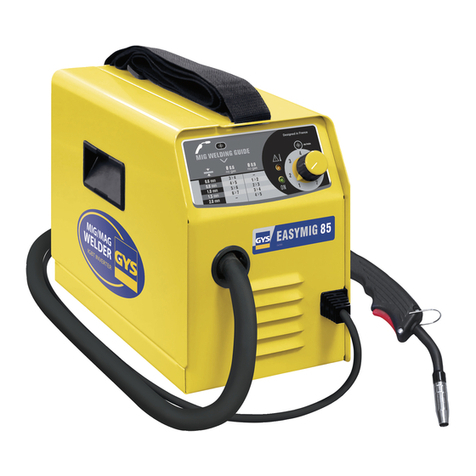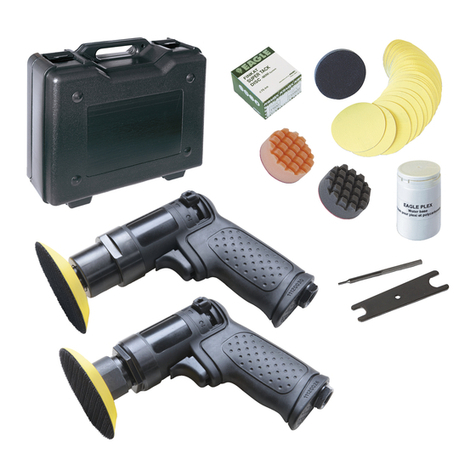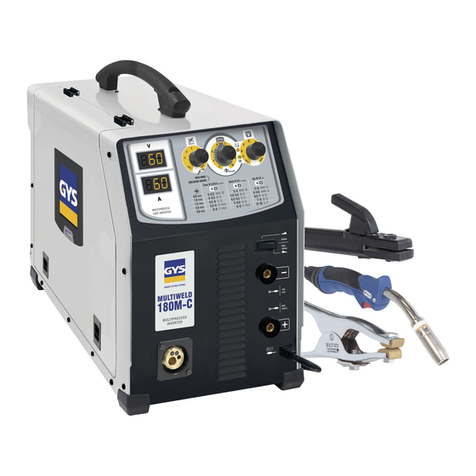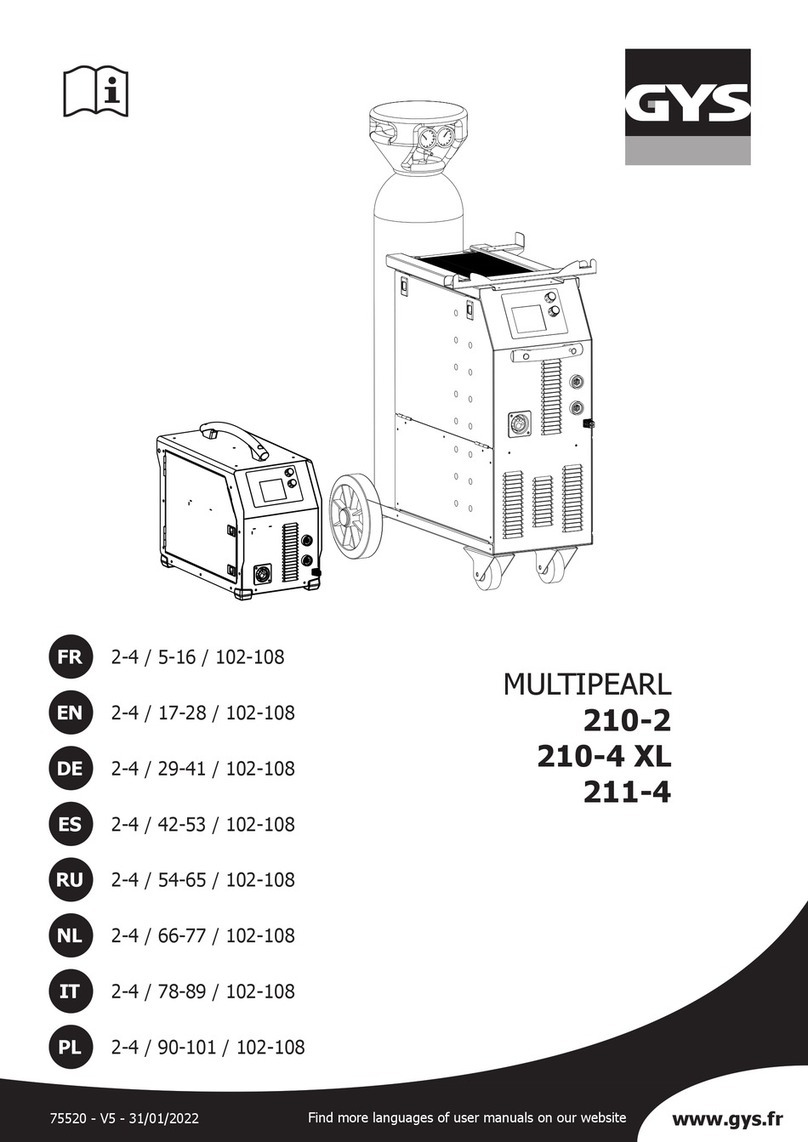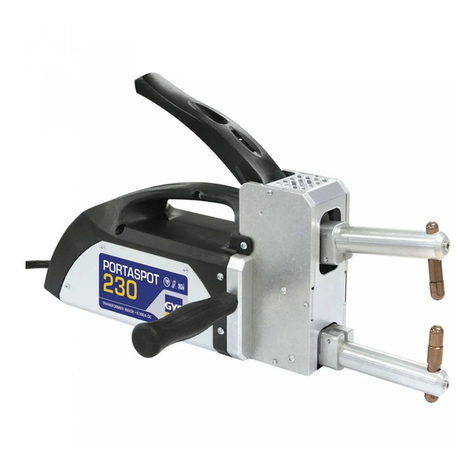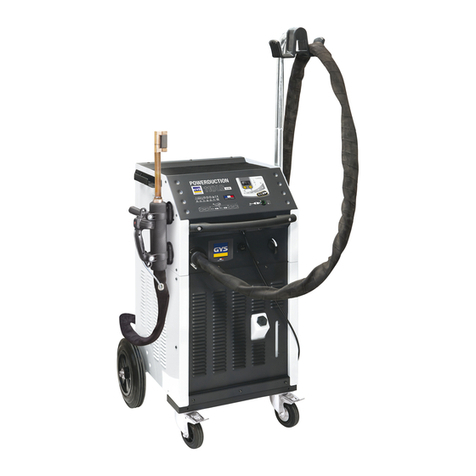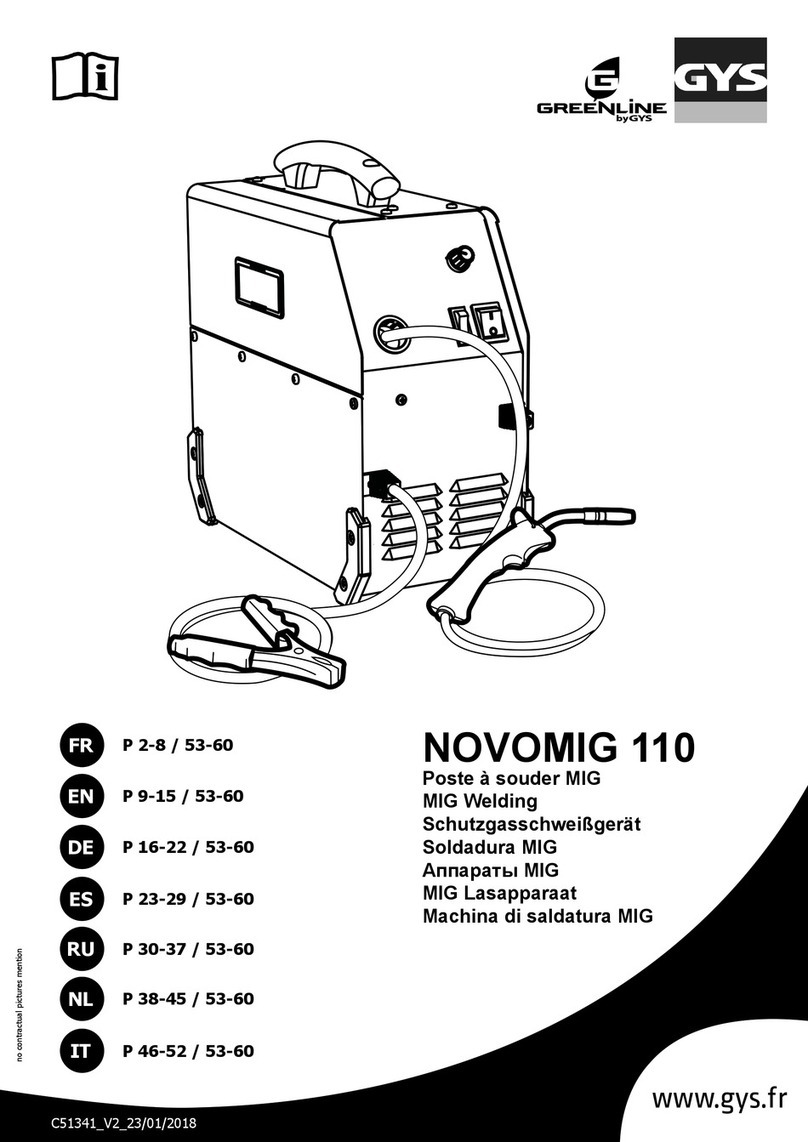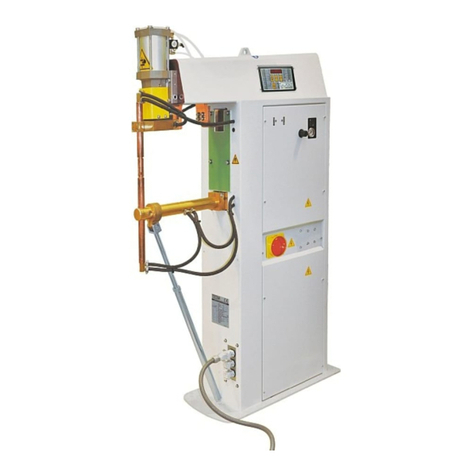
People wearing pacemakers are advised to consult their doctor before using this device.
Exposure to electromagnetic elds while welding may have other health effects which are not
yet identied.
RECOMMENDATIONS TO ASSESS THE WELDING AREA AND WELDING INSTALLATION
Overview
The user is responsible for the installation and use of the arc welding equipment according to the manufacturer's instructions. If electromagnetic
disturbances are detected, the user is responsible for resolving the situation with the manufacturer's technical assistance. In some cases, this
corrective action may be as simple as earthing the welding circuit. In other cases, it may be necessary to construct an electromagnetic shield around
the welding power source and around the entire piece by tting input lters. In all cases, electromagnetic interferences must be reduced until they
are no longer inconvenient.
Welding area assessment
Before installing the machine, the user must evaluate the possible electromagnetic problems that may arise in the area where the installation is planned.
The following elements should be taken into account:
a) the presence (above, below and next to the arc welding machine) of other power cables, remote cables and telephone cables;
b) television transmitters and receivers;
c) computers and other hardware;
d) critical safety equipment such as industrial machine protections;
e) the health and safety of the people in the area such as people with pacemakers or hearing aids;
f) calibration and measuring equipment;
g) the isolation of other pieces of equipment which are in the same area.
The operator has to ensure that the devices and equipment used in the same area are compatible with each other. This may require extra precautions;
h) the time of day during the welding or other activities have to be performed.
The dimension of the cutting area that has to be considered depends on the size and shape of the building and the type of work undertaken. The area
taken into consideration might go beyond the limits of the installations.
Welding area assessment
Besides the welding area assessment, the assessment of the arc welding systems installation itself can be used to identify and resolve cases of
disturbances. The assessment of emissions must include in situ measurements as specied in Article 10 of CISPR 11: 2009. In situ measurements can
also be used to conrm the effectiveness of mitigation measures.
RECOMMENDATION ON METHODS OF ELECTROMAGNETIC EMISSIONS REDUCTION
a. National power grid : the arc welding machine must be connected to the national power grid in accordance in accordance with the manufacturer's
recommendation. In case of interferences, it may be necessary to take additional precautions such as the ltering of the power supply network.
Consideration should be given to shielding the power supply cable in a metal conduit or equivalent of permanently installed arc welding equipment. It
is necessary to ensure the electrical continuity of the frame along its entire length. The shielding should be connected to the welding current's source
to ensure good electrical contact between the conduct and the casing of the welding current source.
b. Maintenance of the arc welding equipment : The arc welding machine should be subject to a routine maintenance check according to the
recommendations of the manufacturer. All accesses, service doors and covers should be closed and properly locked when the arc welding equipment
is on. The arc welding equipment must not be modied in any way, except for the changes and settings outlined in the manufacturer's instructions.
The spark gap of the arc starts and arc stabilization devices must be adjusted and maintained according to manufacturer's recommendations.
c. Welding cables: Cables must be as short as possible, close to each other and close to the ground, if not on the ground.
d. Equipotential bonding: consideration should be given to bond all metal objects in the surrounding area. However, metal objects connected to
the workpiece increase the risk of electric shock if the operator touches both these metal elements and the electrode. It is necessary to insulate the
operator from such metal objects.
e. Earthing of the workpiece: When the part is not earthed due to electrical safety reasons or because of its size and its location (which is the case
with ship hulls or metallic building structures), the earthing of the part can, in some cases but not systematically, reduce emissions. It is preferable
to avoid the earthing of parts that could increase the risk of injury to the users or damage other electrical equipment. If necessary, it is appropriate
that the earthing of the part is done directly, but in some countries that do not allow such a direct connection, it is appropriate that the connection is
made with a capacitor selected according to national regulations.
f. Protection and shielding: The selective protection and shielding of other cables and devices in the area can reduce perturbation issues. The
protection of the entire welding area can be considered for specic situations.
TRANSPORT AND TRANSIT OF THE WELDING MACHINE
The machine is tted with handle(s) to facilitate transportation. Be careful not to underestimate the weight of the machine. The
handle(s) cannot be used for slinging.
Do not use the cables or torch to move the machine. The welding equipment must be moved in an upright position.
Do not place/carry the unit over people or objects.
Never lift the machine while there is a gas cylinder on the support shelf. The transport rules applying to each item are different.
EQUIPMENT INSTALLATION
• Put the machine on the oor (maximum incline of 10°).
• The machine must be placed in a sheltered area away from rain or direct sunlight.
• Provide an adequate area to ventilate the machine and access the controls.
• This equipment must be used and stored in a place protected from dust, acid, gas or any other corrosive substance.
• The machine protection level is IP21, which means:
- Protection against acess to dangerous parts from solid bodies of a ≥12.5mm diameter and,
- Protection against vertically falling drops.
• Power, extension and welding cables must be fully uncoil to avoid overheating.
Warning: Increasing the length of the torch or earth return cables beyond the maximum length specied by the manufacturer will increase the risk
of electric shock.
18
EN
Translation of the original instructions
PROTIG 201 AC/DC - 201L AC/DC

